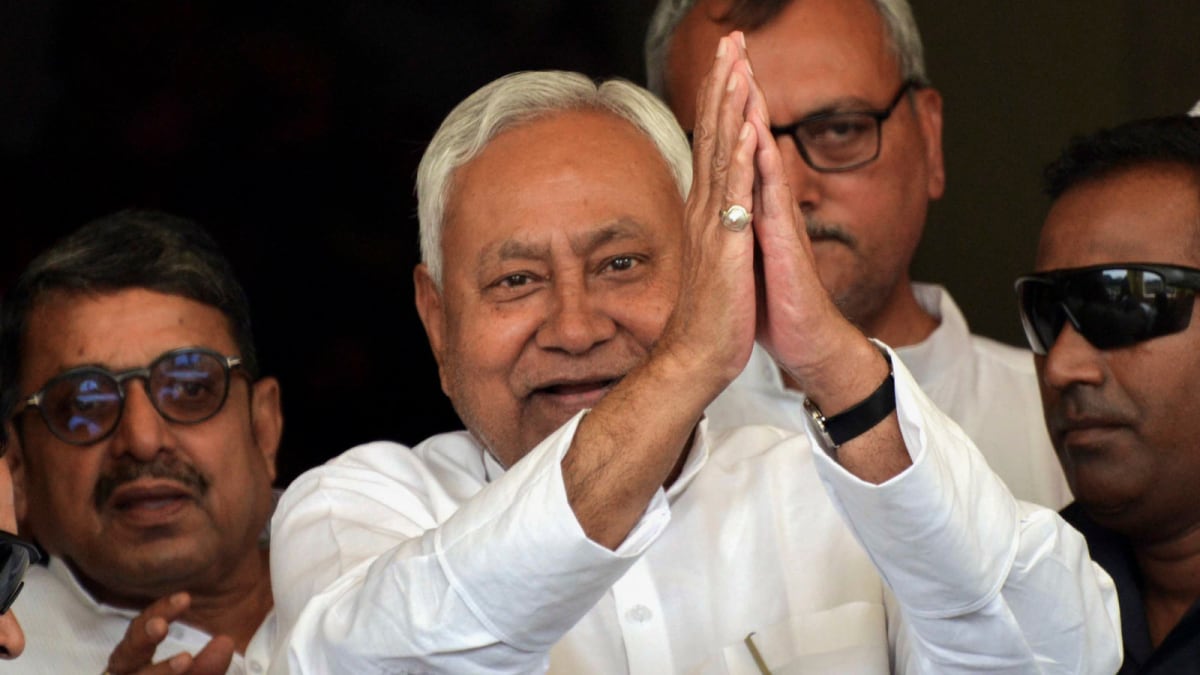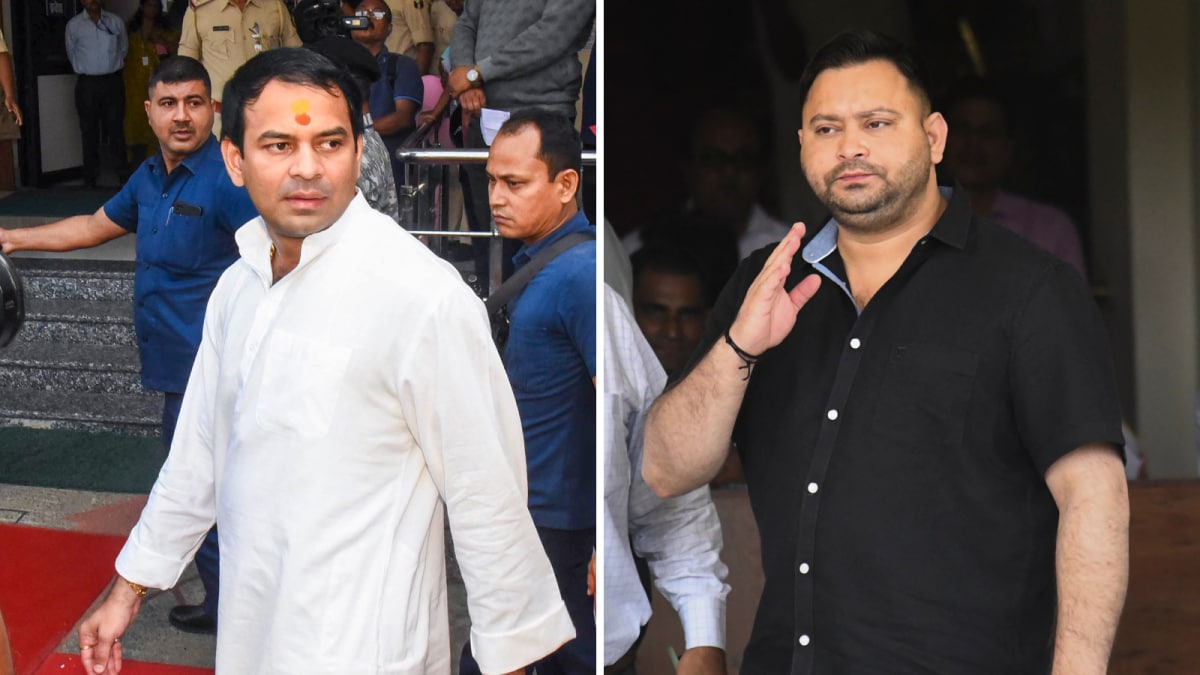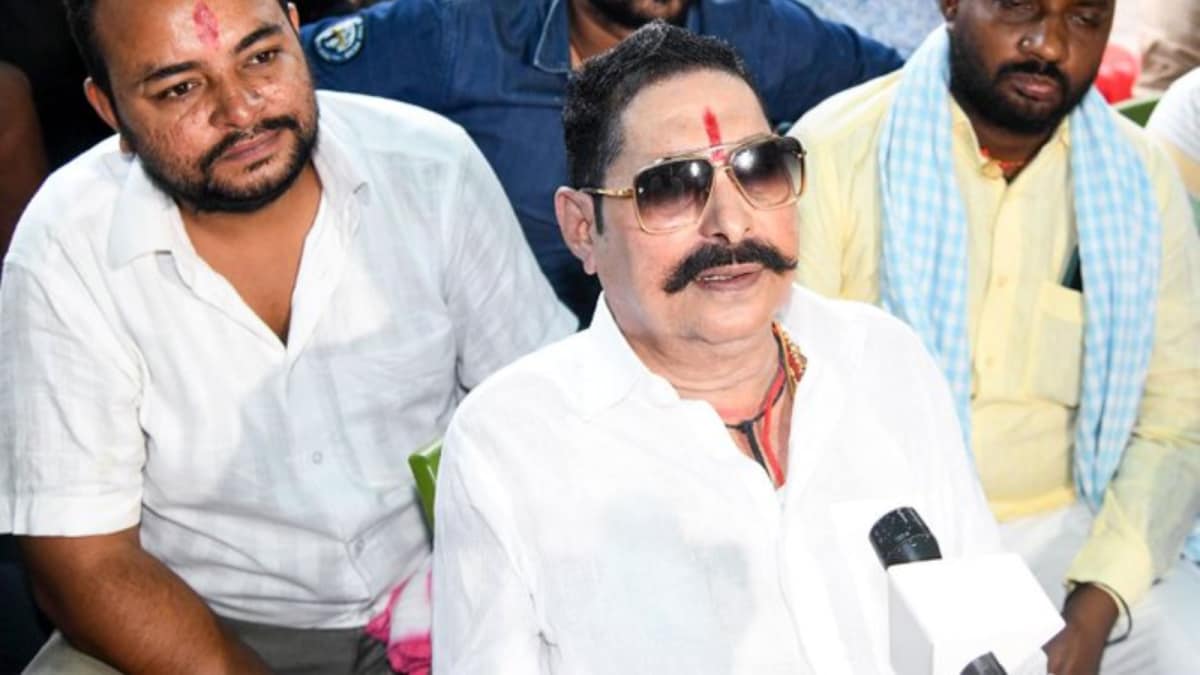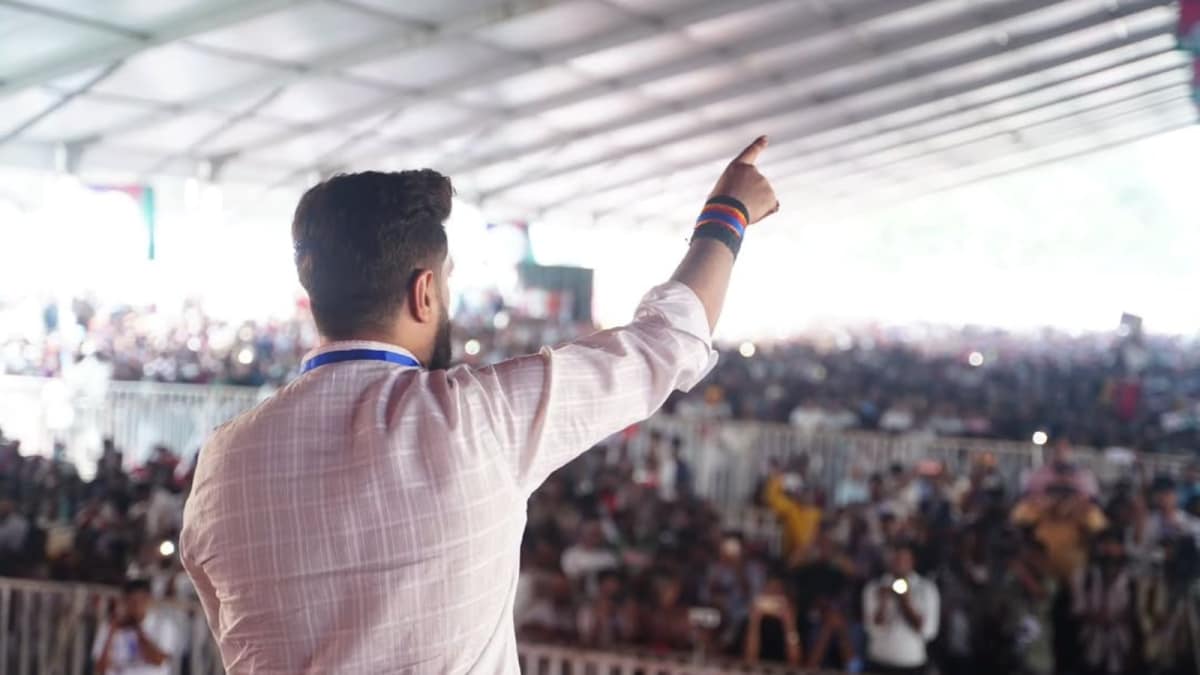Last Updated:
As he stands on the cusp of yet another term, Nitish Kumar once again proves that in the unforgiving arena of Bihar politics, no one stages a comeback quite like him

Nitish Kumar’s political journey remains a study in endurance, adaptability and an unerring instinct for survival. (PTI)
He has been written off more times than history cares to remember. But each comeback, stronger than the last, has firmly established Nitish Kumar as the master survivalist of Indian politics. The JD(U) chief appears poised to take oath as Bihar Chief Minister for the record 10th time as the National Democratic Alliance races to a landslide win, leaving the RJD-Congress Mahagathbandhan in the dust.
Around three hours into the counting of votes on Friday, the NDA was leading on 177 seats, way above the majority mark of 122 in the 243-seat Bihar Assembly. The JD-U was leading on 79 seats while ally BJP was leading on 75.
If the trends hold, Nitish Kumar, already the state’s longest-serving chief minister, will get a record fifth term. In his previous four terms, Nitish Kumar notched up the notorious distinction of taking oath nine times as part of different coalitions, a testament to his survival instincts.
Over the years, the Janata Dal (United) president has distinguished himself as a leader who ruled Bihar for the longest time without his party having ever won a majority on its own. Concealed beneath the feat is the fact that the 72-year-old leader could never remain at peace with his allies which also made him change partners frequently.
No wonder, in a political career spanning four decades, the accusation of “opportunism” and names like ‘Paltu Ram’ have stuck out like a sore thumb, even though there has been no dearth of admirers who remember him for keeping at bay taints of corruption, nepotism and misgovernance.
THE BEGINNING
Born on March 01, 1951, in Bakhtiyarpur, a nondescript town on the outskirts of Patna, to an Ayurvedic practitioner-cum-freedom fighter father, Kumar is an electrical engineer by training.
During his days at the Bihar Engineering College, now known as NIT, Patna, he became active in student politics and got associated with the ‘JP movement’ which introduced him to many of his future associates, including Lalu Prasad and Sushil Kumar Modi who were then, respectively, president and general secretary of the Patna University Students’ Union.
His first electoral success came in the 1985 assembly elections which the Congress swept though he managed to win the Harnaut seat for Lok Dal. Five years later, he moved to Delhi as an MP from the now-abolished seat of Barh.
After another half a decade, when the Mandal wave was at its peak and Prasad was reaping its dividends, Kumar sided with George Fernandes to float the Samata Party, which later morphed into the JD-U and share power with the BJP at the Centre and, from 2005 onwards, in the state.
FIRST STINT AS CM
Nitish Kumar’s first five years as Chief Minister are recalled with admiration even by critics, marked by vast improvements in the restoration of law and order in a state that made headlines for massacres by rivalling militias and kidnappings for ransom.
A product of the Mandal churn, the Kurmi leader also realised that he did not have the advantage of belonging to a populous caste group and created sub-quotas among OBCs and Dalits who were called ‘Ati Pichhda’ (EBC) and Mahadalits, a decision that was resented by the dominant Yadavs and Dusadhs (supporters of Paswan).
2013 BREAK-UP WITH BJP
After his breakup with BJP in 2013, Nitish Kumar still survived in power as the JD(U), which was then just a few members short of the majority mark, got outside support from parties like Congress and CPI, besides a disgruntled faction of the RJD. A year later, though, he stepped down owing moral responsibility for the JD(U)’s drubbing in Lok Sabha elections.
THE MAHAGATHBANDHAN
In less than a year, he was back as Chief Minister, elbowing out his rebellious protégé Jitan Ram Manjhi, this time armed with ample support from the RJD and the Congress.
The Grand Alliance that came into being with JD(U), Congress and RJD coming together, won the 2015 assembly polls handsomely but came apart in just two years.
BACK WITH BJP
Nitish Kumar returned to the NDA in 2017, hoping to get some traction after taking a stand against corruption taint on his then deputy Tejashwi Yadav.
RETURN TO MAHAGATHBANDHAN
Five years later, he again grew disillusioned with the BJP, blaming it for the JD(U)’s debacle in the assembly polls of 2020, when Chirag Paswan fielded many BJP rebels on tickets of his Lok Janshakti Party.
By August 2022, he was back in the Mahagathbandhan or Grand Alliance, which now also included three Left parties.
TRYST WITH INDIA BLOC
Although he retained his chair, Kumar indicated that he had his fill and wanted to mentor Tejashwi Yadav, back as his deputy, as his political successor in the state while applying himself with great vigour to bring together all political outfits opposed to the BJP, hoping for a Janata Party-like formation which could, like the post-Emergency polls, pull off a victory against a seemingly invincible regime.
As host of the first meeting of such like-minded parties in Patna in 2023, Nitish Kumar was widely regarded as the architect of the opposition front INDIA which, however, baulked at naming him as its convenor, and irked him with suggestions like projecting the elderly Congress president Mallikarjun Kharge as the prime ministerial candidate.
DRAMATIC RETURN TO NDA
Nitish Kumar took oath as the chief minister of Bihar for a record ninth time after a dramatic volte-face, ditching the Mahagathbandhan and the INDIA bloc and forming a new government with the BJP, which he had dumped less than 18 months earlier.
Nitish Kumar’s political journey remains a study in endurance, adaptability and an unerring instinct for survival. His zigzag course through Bihar’s alliances may invite criticism, but it has also kept him firmly at the centre of power for two decades — outlasting rivals, rebuilding after setbacks and reinventing himself with each electoral tide. As he stands on the cusp of yet another term, Kumar once again proves that in the unforgiving arena of Bihar politics, no one stages a comeback quite like him.
The News Desk is a team of passionate editors and writers who break and analyse the most important events unfolding in India and abroad. From live updates to exclusive reports to in-depth explainers, the Desk d…Read More
The News Desk is a team of passionate editors and writers who break and analyse the most important events unfolding in India and abroad. From live updates to exclusive reports to in-depth explainers, the Desk d… Read More
Bihar, India, India
November 14, 2025, 11:26 IST
Read More





